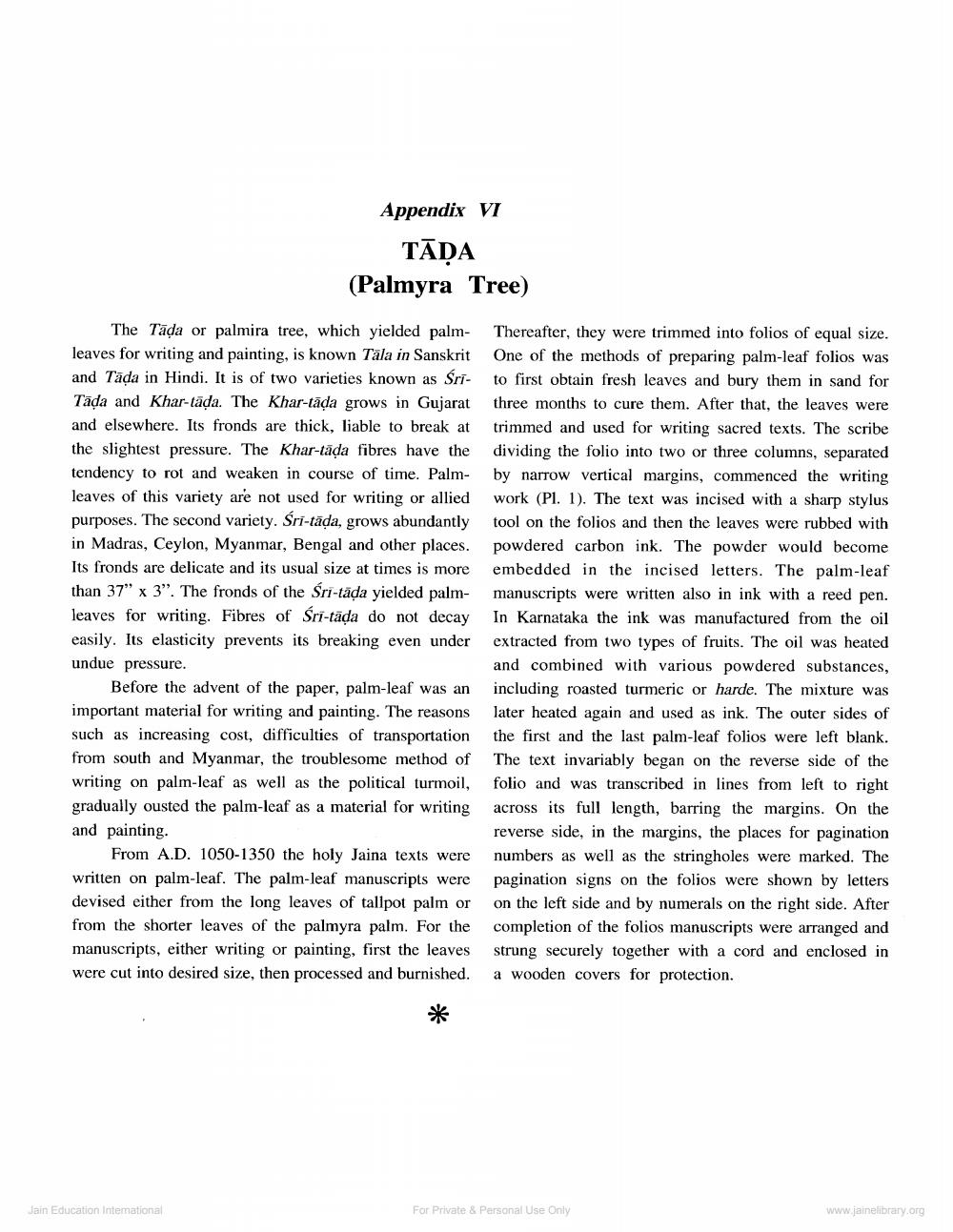________________
Appendix VI
TĀDA (Palmyra Tree)
The Tāda or palmira tree, which yielded palm- leaves for writing and painting, is known Täla in Sanskrit and Tada in Hindi. It is of two varieties known as Sri- Tāda and Khar-tāda. The Khar-tāda grows in Gujarat and elsewhere. Its fronds are thick, liable to break at the slightest pressure. The Khar-tāda fibres have the tendency to rot and weaken in course of time. Palm- leaves of this variety are not used for writing or allied purposes. The second variety. Sri-tāda, grows abundantly in Madras, Ceylon, Myanmar, Bengal and other places. Its fronds are delicate and its usual size at times is more than 37" x 3". The fronds of the Sri-tāda yielded palm- leaves for writing. Fibres of Sri-tāda do not decay easily. Its elasticity prevents its breaking even under undue pressure.
Before the advent of the paper, palm-leaf was an important material for writing and painting. The reasons such as increasing cost, difficulties of transportation from south and Myanmar, the troublesome method of writing on palm-leaf as well as the political turmoil, gradually ousted the palm-leaf as a material for writing and painting.
From A.D. 1050-1350 the holy Jaina texts were written on palm-leaf. The palm-leaf manuscripts were devised either from the long leaves of tallpot palm or from the shorter leaves of the palmyra palm. For the manuscripts, either writing or painting, first the leaves were cut into desired size, then processed and burnished.
Thereafter, they were trimmed into folios of equal size. One of the methods of preparing palm-leaf folios was to first obtain fresh leaves and bury them in sand for three months to cure them. After that, the leaves were trimmed and used for writing sacred texts. The scribe dividing the folio into two or three columns, separated by narrow vertical margins, commenced the writing work (Pl. 1). The text was incised with a sharp stylus tool on the folios and then the leaves were rubbed with powdered carbon ink. The powder would become embedded in the incised letters. The palm-leaf manuscripts were written also in ink with a reed pen. In Karnataka the ink was manufactured from the oil extracted from two types of fruits. The oil was heated and combined with various powdered substances, including roasted turmeric or harde. The mixture was later heated again and used as ink. The outer sides of the first and the last palm-leaf folios were left blank. The text invariably began on the reverse side of the folio and was transcribed in lines from left to right across its full length, barring the margins. On the reverse side, in the margins, the places for pagination numbers as well as the stringholes were marked. The pagination signs on the folios were shown by letters on the left side and by numerals on the right side. After completion of the folios manuscripts were arranged and strung securely together with a cord and enclosed in a wooden covers for protection.
Jain Education Intemational
For Private & Personal Use Only
www.jainelibrary.org




